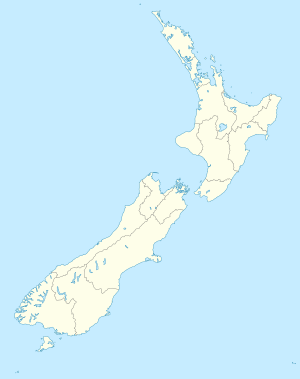Ōkura, New Zealand facts for kids
Quick facts for kids
Ōkura
|
|
|---|---|
|
Suburb
|
|
| Country | New Zealand |
| Local authority | Auckland |
| Electoral ward | Albany ward |
| Local board | Hibiscus and Bays |
| Area | |
| • Land | 36 ha (89 acre) |
| Population
(June 2023)
|
|
| • Total | 430 |
| Postcode(s) |
0792
|
|
|
||
Ōkura is a quiet, countryside village located north of Auckland City in New Zealand. It's managed by the Auckland Council. The name Ōkura means "place of red (clay)" in Māori.
This small village sits on the south side of the Okura River. Across the river is the beautiful Okura Bush Scenic Reserve. Ōkura is special because it's the only place where you can easily launch small boats onto the river.
Contents
History of Ōkura
Early Times and Māori History
Long ago, this area was known as Karepiro. It was part of the traditional land, or rohe, of the Ngāti Manuhiri iwi (a Māori tribe). On the north side of the Okura River, there was a large settlement called Otaimaro.
European Settlement and Dacre Cottage
In 1848, Henry Dacre and his father, Captain Ranulph Dacre, bought the land around the river. They started a large farm called Weiti Station. Around 1855, they built their house, Dacre Cottage, on the north side of the river. It was made from bricks produced right there in the area.
People and Population in Ōkura
Who Lives in Ōkura?
Ōkura is considered a rural settlement by Statistics New Zealand. In the 2023 New Zealand census, Ōkura had a population of 381 people. This was a small increase of 9 people since the 2018 census.
The village has 132 homes. There are slightly more females (195) than males (189). The average age of people in Ōkura is about 42.1 years old. About 17.3% of the people are under 15 years old, and 15.7% are 65 or older.
Backgrounds and Languages
Most people in Ōkura, about 92.9%, are European (also called Pākehā). Some people also identify as Māori (8.7%), Pasifika (2.4%), or Asian (3.9%).
Almost everyone (96.9%) in Ōkura speaks English. A small number (0.8%) speak Māori language. About 33.9% of the people living in Ōkura were born outside New Zealand.
Jobs and Education
Many adults in Ōkura have good education. About 22.9% have a bachelor's degree or higher. More than half (50.5%) have a certificate or diploma from after high school.
The average income in Ōkura is around $53,700 per year. Many people are employed full-time (54.3%) or part-time (17.1%).
Ōkura Bush Area Population
The Ōkura Bush statistical area is a larger region that includes Ōkura village and Weiti Village. This wider area had a population of 1,395 people in the 2023 New Zealand census. This was an increase of 123 people since the 2018 census.
Images for kids



